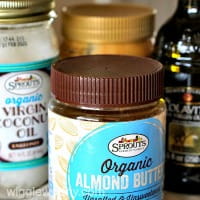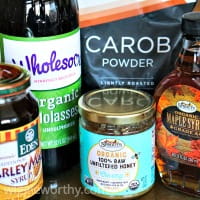Baking Substitutions for Dog Treat Recipes
These simple dog-safe baking substitutions for dog treat recipes allow you to be creative and add variety to your dog's special treats!
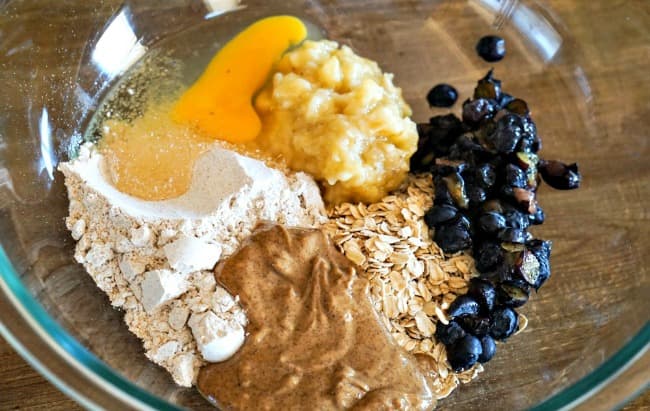
Maybe you've found a homemade dog treat recipe that you really want to try but you're short just one ingredient.
Or perhaps your dog doesn't like, or is allergic or sensitive to, something in the recipe and you want to replace it.
If your dog has allergies to certain foods, knowing what you can use instead of a trigger ingredient is very helpful! You can also find out more about making treats for dogs with allergies HERE.
Whatever the reason, this page has the information you need to make the substitutions you want to, safely and easily.
Dairy Substitutions in Dog Treat Recipes
Just like humans, dogs can be lactose intolerant and it causes the same sort of issues too - loose stools, gas and stomach ache. In fact, lactose intolerance is 'a leading source of food intolerance in dogs' according to the American Kennel Club.
Luckily today there are a LOT of dairy alternatives and you can use these in your dog treat recipes to prevent lactose-intolerance upsets.
Dairy milk can be replaced with unsweetened (and un-flavored) almond, soy or coconut milk in a 1:1 substitution. There's also no rule that says milk has to be replaced with milk! It's just fluid, so if you want to you can use one cup of water, or even a fruit juice like apple juice (plain or diluted).
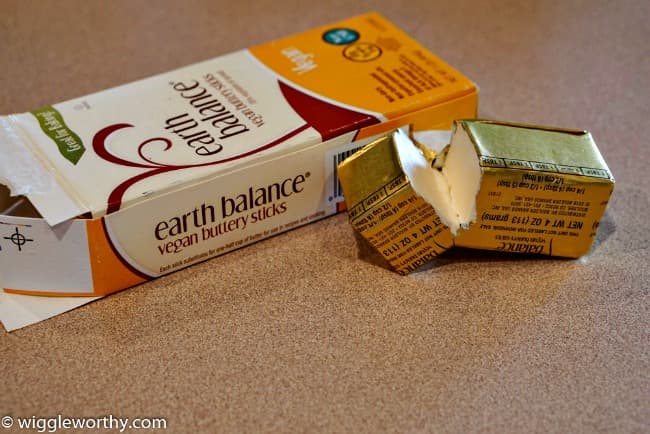
Yogurt can be replaced with non-dairy yogurt in a 1:1 substitution
Butter or margarine can be replaced with non-dairy spreads/sticks
Cheese can be a little trickier to substitute as popular soy-based cheeses don't behave quite the same way in baking. Look for milk and soy-free cheeses or use nutritional yeast (NOT the same as brewers or live yeast, and yes it IS nutritious and especially rich in B vitamins) which has a nutty, savory flavor and is popular in vegan or vegetarian dishes. When it comes to actual ratio or amounts this is also a little tricky.
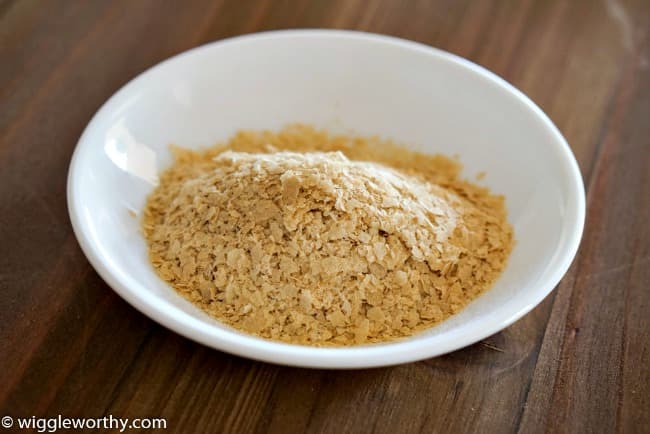
The closest 'real' cheese to nutritional yeast in terms of taste per spoonful is Parmesan. Of course it's not as big a deal if the flavor is stronger, or less subtle, when you're making dog treats. Your pups won't care! When substituting nutritional yeast for cheese in recipes I'd suggest dividing by two, for example: if your recipe calls for 1/4 cup shredded cheese, I'd suggest using 1/4 cup nutritional yeast and increasing the liquid in the recipe by 1 tbsp.
Replacing Eggs in a Dog Treat Recipe
Eggs play a dual role in recipes by providing moisture and softness while also helping a batter/dough to rise.
Many of the homemade dog treat recipes on my site don't contain eggs, but they do include other ingredients which work in a similar way. If you're making dog treat biscuits the rising properties aren't too important, but if you're making pupcakes you'll want to add a little extra leavening agent (ie baking powder).
In baking recipes, one egg can be replaced by:
- 1/4 cup applesauce (+ 1 tsp baking powder for pupcakes)
- 1/4 cup mashed banana (+ 1 tsp baking powder for pupcakes)
- 1/4 cup pumpkin puree (+ 1 tsp baking powder for pupcakes)
- 1/4 cup mashed potato or mashed sweet potato
- 1/4 cup unflavored and unsweetened yogurt
- 1 tbsp ground flax seed + 2 1/2 tbsp hot water*
- 1 tbsp chia seeds + 3 tbsp hot water*
- 2 tbsp water + 1 tbsp vegetable oil + 2 tsp baking powder, mixed
- 1 tbsp white vinegar + 1 tsp baking soda
* These are called flax eggs or chia eggs. Find out how to make them (and how nutritious they are!) here.
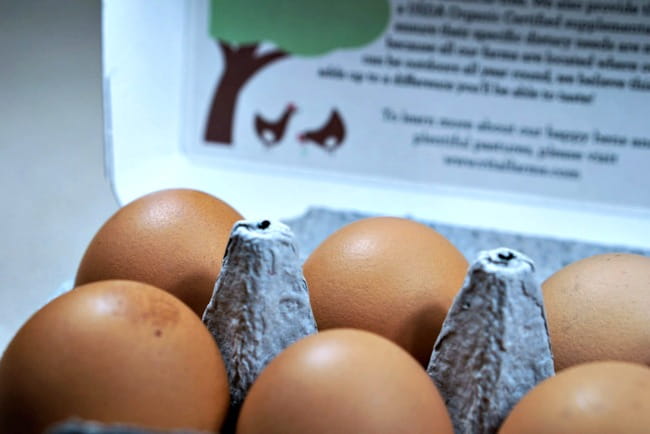
Flour Substitutions in Dog Treat Recipes
Substituting one flour for another is one of the trickier switches to make, especially if you're trying to replace wheat flour with a gluten free alternative. Each flour is quite different in terms of texture, absorbency, fat content, flavor, density, nutrient profile and storage requirements. You can learn about all of these here.
There's no simple way to replace whole wheat flour (or any wheat-based flour) in a recipe because each alternative combines with, and acts on, the other ingredients in a different way. What works in one recipe may be a total failure in another and the only way to find out for sure what works is to experiement (or use a recipe which already calls for the flour you want to work with).
The following examples are ESTIMATES and you may need to adjust the other ingredients a little in order to get the right consistency of dough or batter.
Many times it's best to use a mixture of two or more gluten free flours rather than just one, because their properties can combine to overcome individual extremes. Choosing one whole grain flour and one white flour or starch to mix gives the best results. For more info. on doing this check out this page.
Flour substitutions per cup
These figures are estimates and you will need to adjust the other ingredients to get the right consistency of dough or batter.
In some situations using a blend of two or more gluten free flours will give a better result. Further details on adjusting the recipe to improve results are below.
1 cup wholewheat flour =
- 1/3 cup coconut flour
- 3/4 cup brown rice flour
- 7/8 cup garbanzo bean flour
- 1 cup almond flour
- 1 cup sorghum flour
- 1 1/2 cups oat flour
Adjusting recipes for gluten-free flour
Coconut flour (1/3 cup coconut flour = 1 cup whole wheat flour) Coconut flour is very absorbent and needs a lot more liquid in the recipe than whole-wheat flour and it's best used in combination with another gluten free flour rather than on it's own. When substituting only coconut flour for whole wheat flour you may need to double the number of eggs in the recipe and increase/add additional liquid (start with 1/4 cup) and increase baking powder and/or baking soda by 50%. Coconut flour and garbanzo bean flour behave very similarly and can be substituted in a 1:1 ratio BUT bear in mind that they have very different flavors. Coconut flour is sweeter and garbanzo bean flour more savory. Blending the two in a 50/50 split can work in some recipes.
Oat flour (1 1/2 cups oat flour = 1 cup whole wheat flour) can be used by itself as a whole-wheat replacement. It makes treats more moist than whole wheat flour so there's no need to increase liquids or eggs. To prevent heavy, flat results, if making dog treat biscuits add 1 tsp baking powder per cup of oat flour, for pupcakes add 2 tsp baking powder per cup of oat flour. Oat flour can help add lightness and can replace 25% of any other gluten free flour in a recipe to this end.
Almond flour (1 cup almond flour = 1 cup whole wheat flour) add one extra egg (or egg white) plus 1/4 tsp xanthan gum per cup of almond flour. You may also need to adjust liquid in the recipe (possibly reduce it) to get the right consistency as almond flour is not very absorbent. If your recipe calls for a raising agent such as baking powder or baking soda, you may need to double the amount of either of these that you use because the nature of almond flour tends to work against them.
Garbanzo bean (aka Chickpea) flour (7/8 cup garbanzo bean flour = 1 cup whole wheat flour) is best used in combination with another gluten free flour such as brown rice flour. You will need additional liquid as this flour is LESS absorbent than whole wheat flour, plus add 1/2 tsp xanthan gum per 7/8 of a cup of garbanzo bean flour. You can substitute coconut flour for garbanzo bean flour in a 1:1 ratio because they have similar properties and behaviors in a recipe. But they taste very different. A 50/50 split can help off set that difference.
Sorghum flour can be substituted 1:1 for wholewheat flour but need to increase (or add) eggs to the recipe and 1/2 tsp of xanthan gum per cup of flour. You may get better results by mixing sorghum flour with brown rice flour in a 75:25 ratio
Brown rice flour (3/4 cup brown rice flour = 1 cup whole wheat flour) can be used by itself in place of whole wheat flour but works better if used in a 50:50 ratio with another gluten free flour such as oat flour or garbanzo bean flour. Treats baked with brown rice flour may rise reasonably well and you generally don't need a rising agent. However, brown rice flour is more absorbent than whole wheat flour and you will need to add an extra egg and/or 1/4 tsp xanthan gum per cup of flour, plus additional liquid (start with 1/8 cup and work up until you get the right consistency). Increasing any oil or fat in the recipe and/or adding extra fluid using pureed fruits or vegetables such as applesauce or pumpkin can also work well.
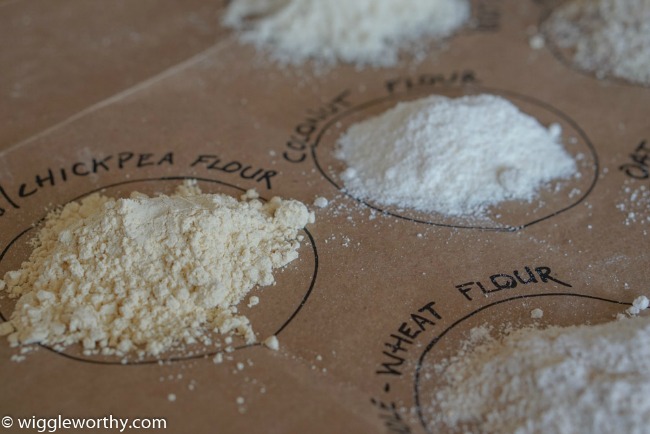
Treats or pupcakes made with gluten-free flours will turn out better if you cook them at a lower oven temperature than you would if using whole wheat flour. I'd recommend reducing your oven temperature by 25F (preferably always using a temp that is below 350F).
Treats made with almond flour (or other higher-fat/nut flours) have a tendency to burn so watch them carefully while baking.
Coconut flour bakes quickly and you may want to reduce cooking time by about 1/3rd
Xanthan gum is considered to be safe for dogs but it can cause gas (it can do this in people too!) so be sparing and use less rather than more if in doubt.
You can buy gluten free flour blends, or it's pretty simple to make your own at home. Using a blend eliminates most of the guesswork and trial-and-error when you're replacing a wheat flour in an existing recipe.
Sugar Substitutions for Dog Treats
There are a number of different ways to add a touch of HEALTHY sweetness to your homemade dog treats.
Molasses, maple syrup, honey, barley malt syrup and coconut nectar are all great sugar-alternatives you can use in your dog treat recipes. Each one has nutritional value in it's own right and a unique flavor.
With most syrups you can substitute one for another in a 1:1 ratio (eg 1 tbsp of maple syrup for 1 tbsp coconut syrup). You can also do this with blackstrap molasses (the most nutritious type of molasses and the one I prefer to use) but bear in mind that it has a stronger flavor than most other syrups and also makes baked goods darker in color.
If your original recipe called for sugar and you're replacing it with a syrup it's a good idea to reduce the liquid in the recipe by a small amount, to make up for the extra moisture in the syrup.
You can also use carob powder to add a hint of chocolate flavor and a touch of color to your goodies. If you have a recipe where you want to use actual sugar granules, try coconut sugar as a 1:1 substitution. It has a lower glycemic index and tastes a lot like brown sugar. However, I prefer not to use any type of sugar.
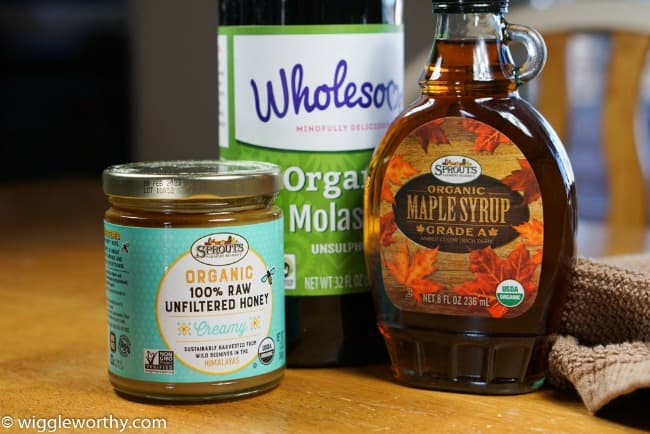
Chocolate & Xylitol Are Deadly For Dogs!
When it comes to sweetening your treats NEVER use chocolate or Xylitol. Both are highly toxic to dogs and just a little could be deadly.
CREATE YOUR OWN UNIQUE DOG TREAT RECIPES...
If you're feeling creative you can conjure up an endless variety of treats that use your dogs favorite flavors and take into account any health conditions or allergies as well as the ingredients you have to hand.
Check out this page for my versatile, customizable DIY dog treat recipe. It gives you the opportunity to mix-and-match ingredients and make easy substitutions.
Give it a try and whip up some custom-made treats for your good boy!
You Might Also Like These pages...
- Home
- Baking Substitutions for Dog Treat Recipes
